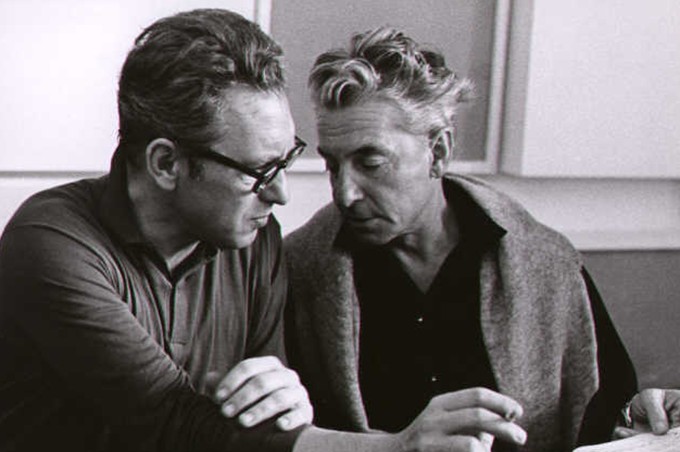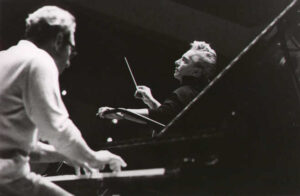12 January 2024
P.R. Jenkins
Karajan artists: Géza Anda – “a troubadour of the piano”

“Despite Anda’s admiration for Furtwängler and his well-nigh brotherly bon with Ferenc Fricsay […] it was Anda’s connection with Herbert von Karajan that provided him with an ideal artistic partnership.”
Wolfgang Rathert
Karajan’s admiration for the great pianists he worked with (Haskil, Lipatti, Gilels, Gould, Richter etc.) did not necessarily produce a large number of joint concerts and recordings. One of his favourite partners was Géza Anda. He was a highly acclaimed pianist in the years between the end of World War II and his early death in 1976. Born in Budapest in 1921, he studied with Kodály, played concerts in Berlin with Furtwängler during the war (who called him “a troubadour of the piano”) and settled in Switzerland as a young man. Karajan and Anda met for the first time in Berlin in the early 1940s but did not work together. After the war, Walter Legge brought them together again and they performed Bartók’s 3rd piano concerto in Torino in February 1954 and in Berlin seven months later. (The concerto, written for Bartók’s wife, the pianist Ditta Pásztory-Bartók, is one of his last works. He died before he could write down the last few bars, it was completed by his pupil Tibor Serly and first performed in 1946 by György Sandor and Eugene Ormandy because Ditta wasn’t able to play it so shortly after his death. When Karajan first performed it in 1951, it was only a few years old.)
Also in 1954, Karajan and Anda performed Brahms’ 2nd piano concerto for the first time, a work that was destined to become their ‘pièce de résistance’. They played it most often in concert and it is the only piece they recorded in the studio. Anda’s biographer Wolfgang Rathert wrote:
“The highpoint of their collaboration came in 1967 and 1968, when they again devoted themselves to Brahms’ 2nd Concerto. […] Their 1967 recording is considered by many admirers of Anda’s art to demonstrate the very pinnacle of his mastery. […] His recording with Karajan displays an extraordinary tonal delicacy and artistic serenity that would have been impossible without his long familiarity with both the orchestra and its conductor.”

In the following year, a unique combination of master pianists met at the Lucerne Festival: Anda and Clara Haskil played Bach’s C major concerto for two pianos under Karajan’s baton. A Swiss broadcast recording was recently restored and published. In 1956 and 1968, it was Brahms’ 2nd piano concerto again at three concerts in Berlin and in 1957, it was Mozart’s K. 467 for the first time. Eleven years later they performed the “sister work” K. 466 in Salzburg, a city with a special significance not only for Mozart and Karajan but also for Anda who recorded all the Mozart concertos as pianist and conductor with the Mozarteum Orchestra. Their last-ever joint performance was again Bartók’s 3rd piano concerto in 1972 and they “gave ample proof of their ability to achieve an existentially charged interpretation” (Wolfgang Rathert). It is one the few live recordings Karajan made with the Staatskapelle Dresden and Anda – Karajan’s biographer Richard Osborne wrote – “played with astonishing beauty and determination”.
Legend has it that in his last years Anda planned to record the entire piano music of Brahms, including the first piano concerto – with Karajan. Might he have persuaded Karajan to conduct a work that Karajan mysteriously never touched?
We’ve prepared playlists with Karajan and Géza Anda. Listen to them here.
— P.R. JenkinsWolfgang Rathert: “Géza Anda Pianist” Wolke Verlags-GmbH, Hofheim am Taunus. 2021
Richard Osborne: “Karajan. A Life in Music” Chatto & Windus, London. 1998

